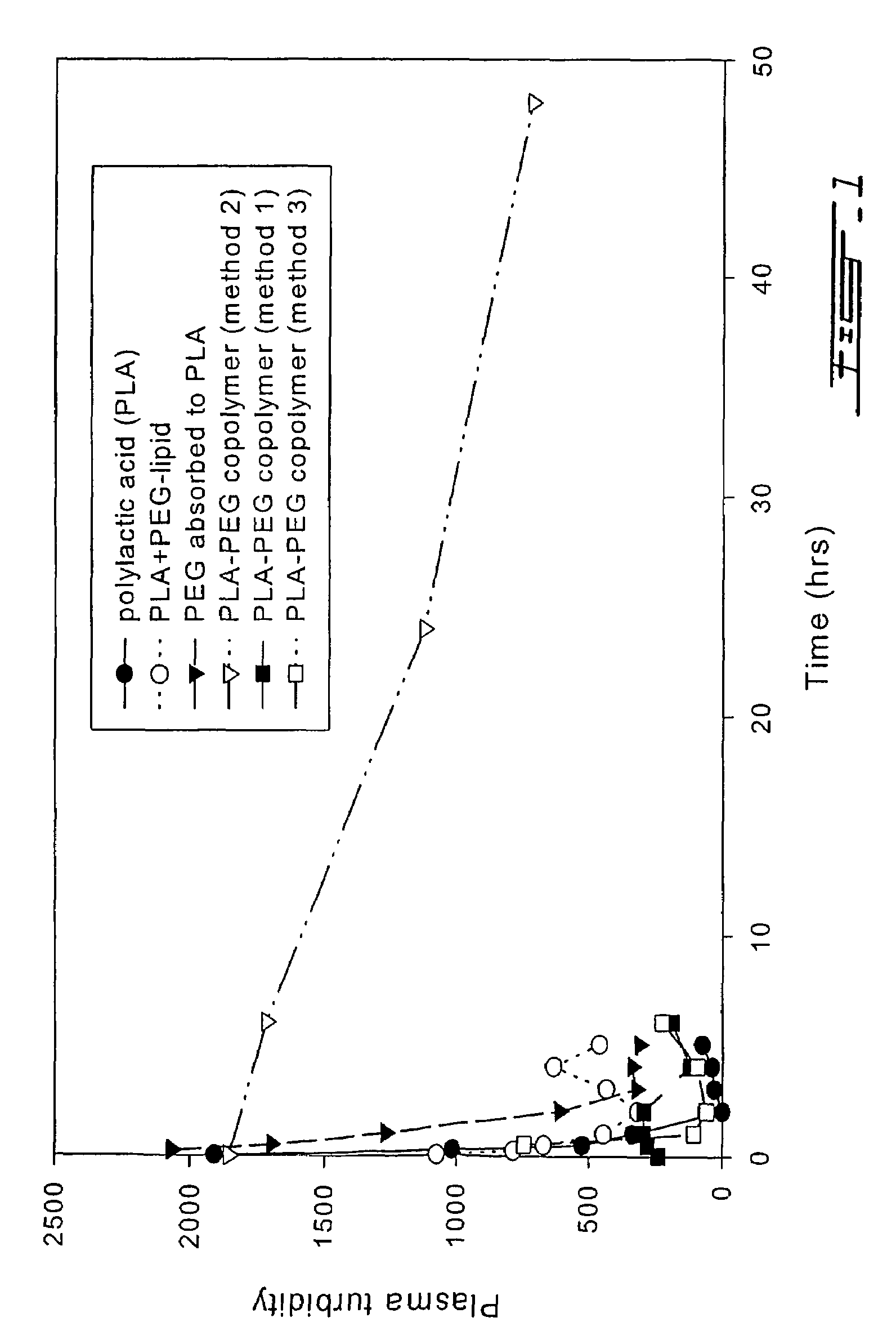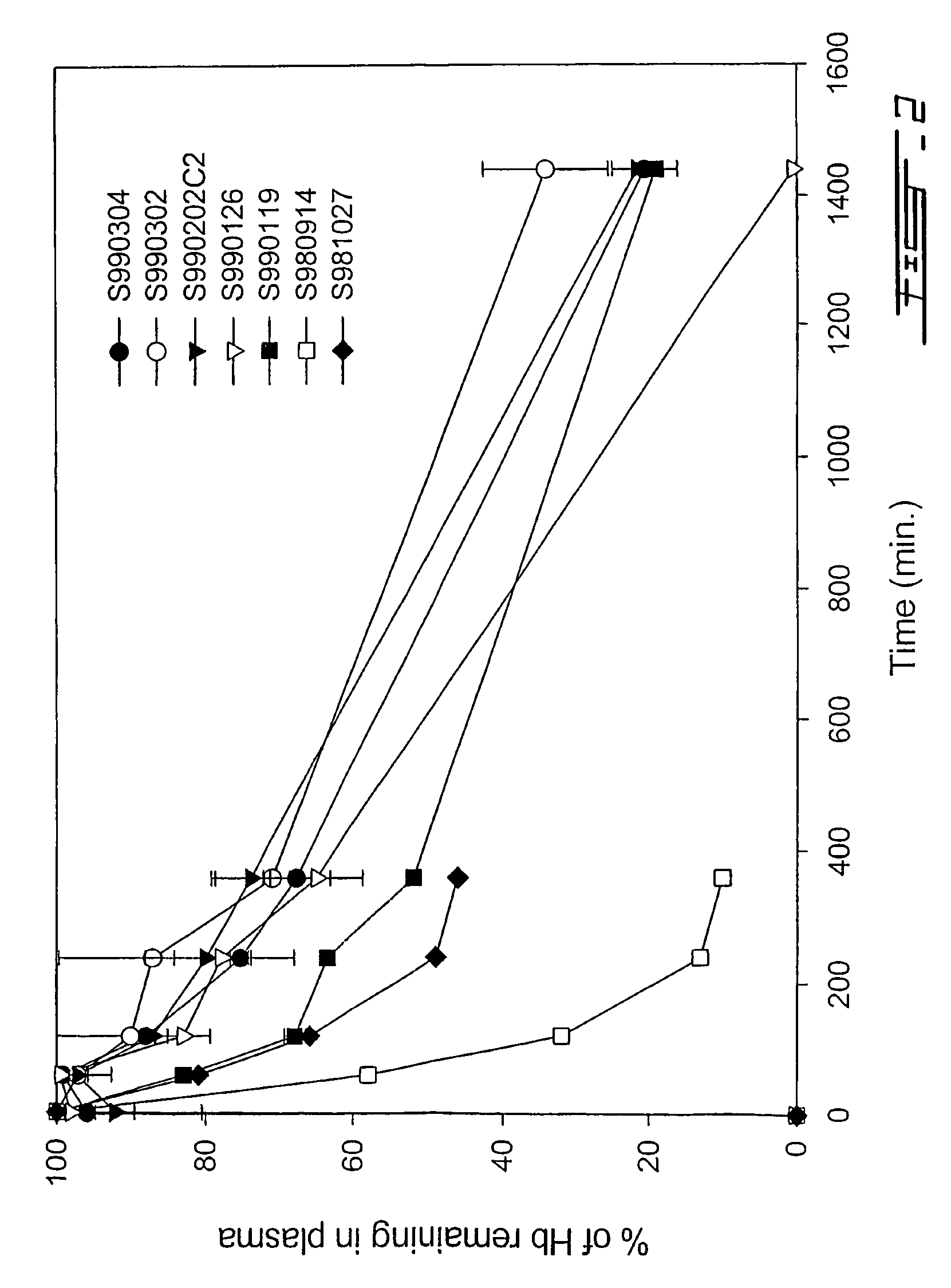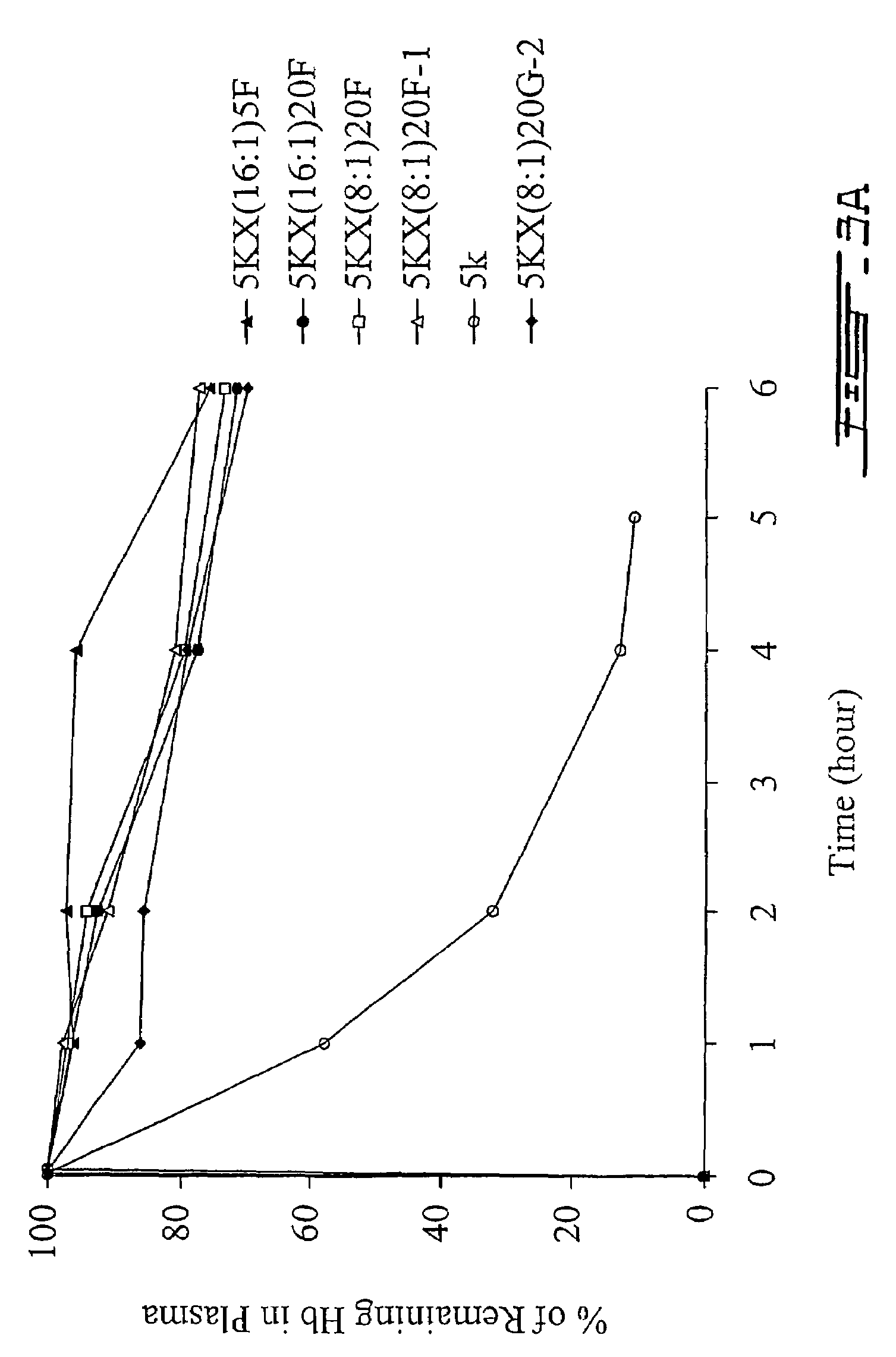Biodegradable polymeric nanocapsules and uses thereof
a polymeric nanocapsule and biodegradable technology, applied in the field of nanocapsule compositions, can solve the problems of affecting the quality of encapsulated agents of therapeutic agents, so as to improve the quality and integrity of encapsulated agents and improve the in vivo stability. , the effect of enhancing the in vivo circulation time of said macromolecules
- Summary
- Abstract
- Description
- Claims
- Application Information
AI Technical Summary
Benefits of technology
Problems solved by technology
Method used
Image
Examples
example i
Standard Polymeric Nanocapsule Preparations
[0066]We first varied the membrane compositions of 5 variations of polymeric nanocapsules and studied their effects on circulation time.
[0067](1) Polylactic acid(PLA)-nanocapsules were prepared by as described above for standard nanocapsules. These PLA-nanocapsules displayed a circulation half-time of about two hours (FIG. 1).
[0068](2) The addition of phospholipids to the polymer membrane of nanocapsules of the standard procedure resulted in only modest increases in circulation time (this item not shown in FIG. 1). In this case, hydrogenated soybean lecithin (HSPC) or distearoyl phosphatidylcholine (DSPC) was incorporated into the PLA nanocapsules.
[0069](3) The incorporation of lipid-polyethylene glycol (PEG) to the polymer membrane of nanocapsules did not result in any significant increases in the circulation time (FIG. 1—PLA-PEG-lipid). Here, 1,2-dietearoyl-glycero-3-phophoethanolamine-N-[poly(ethylene glycol)-2000] was incorporated into ...
example ii
Preparation of Hemoglobin Encapsulated Nanocapsule Compositions
[0072](1) Organic Phase:
[0073]Dissolve 100 mg of the PLA-PEG copolymer prepared as described in details below (Method 2) in 8 ml acetone. Dissolve 50 mg hydrogenated soybean phosphatidylcholine (Avanti Polar Lipids, Alabaster, Ala.) in 4 ml ethanol with the help of Ultrasonic water bath (very low power). Above two solutions were mixed and use as organic phase.[0074](2) Aqueous Phase:
[0075]Take 0.04 ml of Tween 20, mix with 25 ml 15% (g / dl) hemoglobin.[0076](3) Preparation:
[0077]Slowly inject (8 ml / min.)(The injection head is made with a 0.2 ml pipette tips) the organic phase into the aqueous phase under magnetic stirring [with Therm-O-Swirl Stirrer (Precision Scientific Co., Chicago) setting to 6)], at 4° C. The nanocapsules were formed immediately, but, the suspension was keeping stirring for 15 min. The suspension prepared is 37 ml.
[0078]The organic solvent was partly removed from above suspension prepared by rotary ev...
example iii
Use of PLA-PEG Copolymer as a Nanocapsule Carrier
[0084]Once we obtained a nanocapsule with sufficient circulation half-time, we proceeded to study this nanocapsule preparation with the exemplary macromolecule, hemoglobin (Hb). In light of the 35 hour circulation half-time obtained with the PLA-PEG copolymer preparation (Method 2) above, this preparation was further studied as a nanocapsule membrane carrier for the in vivo delivery of hemoglobin. According to the present invention, hemoglobin is employed as an exemplary macromolecule to illustrate the properties of the nanocapsule of the present invention as a carrier for therapeutic agents of interest. However, the present invention is not limited thereto.
[0085]Hemoglobin nanocapsules were successfully prepared (as described above).
[0086]These nanocapsules displayed circulation half-time of about 35 hours—similar to those nanocapsules prepared without Hb. However, the encapsulated hemoglobin was found to leak out of the nanocapsules...
PUM
| Property | Measurement | Unit |
|---|---|---|
| molecular weight | aaaaa | aaaaa |
| circulation half-time | aaaaa | aaaaa |
| in vivo circulation half-time | aaaaa | aaaaa |
Abstract
Description
Claims
Application Information
 Login to View More
Login to View More - R&D
- Intellectual Property
- Life Sciences
- Materials
- Tech Scout
- Unparalleled Data Quality
- Higher Quality Content
- 60% Fewer Hallucinations
Browse by: Latest US Patents, China's latest patents, Technical Efficacy Thesaurus, Application Domain, Technology Topic, Popular Technical Reports.
© 2025 PatSnap. All rights reserved.Legal|Privacy policy|Modern Slavery Act Transparency Statement|Sitemap|About US| Contact US: help@patsnap.com



